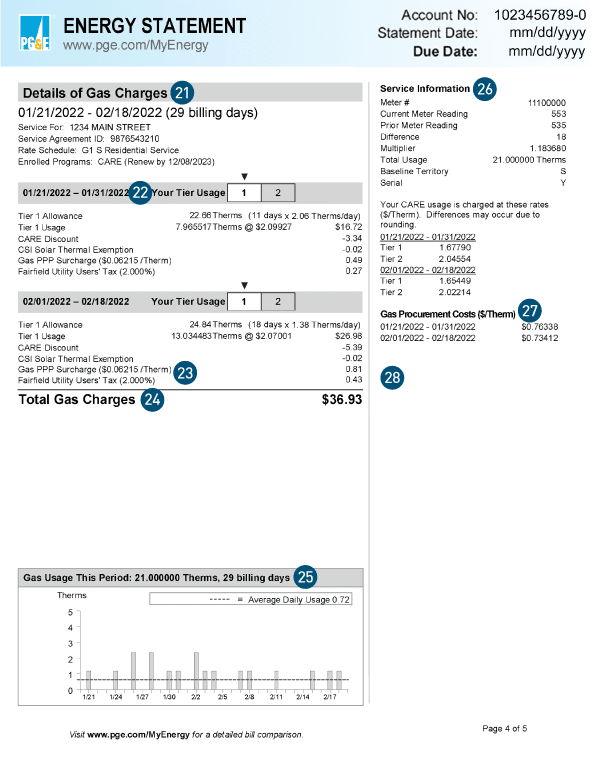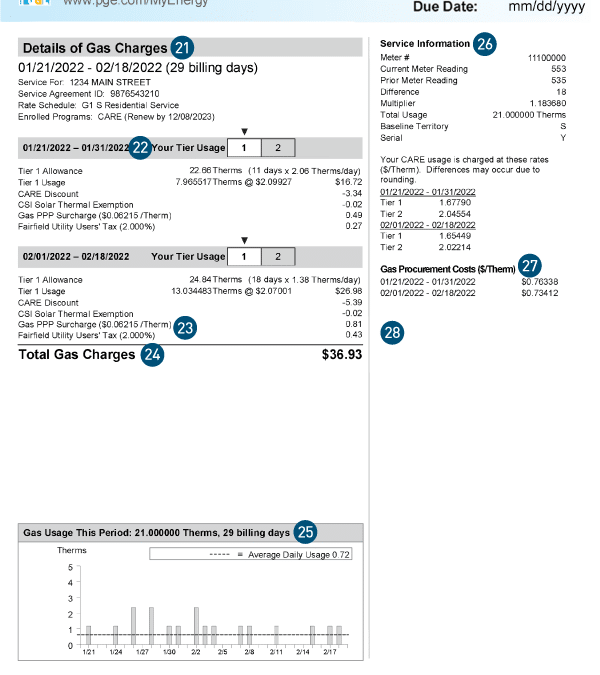Demystifying Your Business’s Electricity Bill can be a task, and in the complex world of business, leaders face numerous challenges every day. You want to just focus on running your business as efficiently as possible and you keep seeing your energy costs going up, but what does it all mean? Understanding the intricacies of electricity bills is not something most business leaders are well versed in, particularly when it comes to understanding what each line item means or if you can control it. In this blog, we will break down these components to empower business leaders to make informed decisions about their energy consumption and costs.
Basic Service Charge or Service Fee
The basic service charge is a fixed monthly fee that covers the cost of maintaining your electrical service connection.

This fee typically remains consistent regardless of your electricity usage. This is a recurring cost that doesn’t vary with consumption and will be paid for as long as you want to be connected to the grid.
Delivery Charge
The delivery portion of your electric and gas bill covers the cost of getting the applicable services to you. For electric service, this includes building and maintaining power lines, meters, billing systems, etc.
Energy Charge
The energy charge represents the cost of the electricity you consume. It’s calculated by multiplying your usage (in kWh) by the applicable rate per kWh. Businesses on tiered or TOU rate schedules should pay close attention to this charge, as it fluctuates based on consumption and time of use. There are opportunities to manage this charge by optimizing your business operations, managing when major equipment turns on and off or by utilizing your own onsite energy solution to ensure you are consuming grid power when it is at its cheapest.
Demand Charge
Demand charges are typically applied to commercial and industrial customers. They are based on the highest rate of electricity consumption (in kW) during a specific time frame.
Demand charges represent the high costs that electric companies pay for generating and transmission capacity that sits idle most of the time. Demand charges are based on the amount of energy consumed by your business in a specified period of time known as a demand interval. Demand intervals are usually 15 or 30 minutes. To calculate your demand, the electric company takes the demand interval with the highest energy consumption in kilowatt-hours (kWh) and divides by the length of the demand interval in hours. Mathematically, this is expressed as kilowatt hours per hour. The hours are canceled, leaving kilowatts.
Often demand charges can make up a significant portion of your bill, managing and reducing peak demand can help lower your demand charges, making it a significant area for potential cost savings. This can be achieved by:
- Installing more efficient equipment and energy efficiency practices
- Rescheduling your energy loads – perform energy-intensive operations when the overall facility energy demands are lower
- Energy storage for load shifting can be in the form of batteries or thermal. In the case of batteries, charge them with your own onsite generation (solar, wind, gas etc) or utility power when your overall demands are lower, and use them to provide power during high load periods or, in the case of thermal, an example being – create ice when energy is cheap and then use it for cooling when ambient temperatures are high, the facility is running at high capacity and energy costs are elevated.
- Dispatchable load shifting – allows your utility to interrupt nonessential/critical loads at for facility for specific amounts of time in exchange for lower rates. You can work with your utility to determine what equipment is nonessential and for how long they can shut them off.
- Onsite energy generation – generate your own energy onsite considering solar, wind, gas, diesel, fuel cells and beyond. By generating and consuming your own energy you can reduce your peak demand.
Be sure to check out our most recent podcast breaking down the details of your energy bill.
Onsite Energy Value
Deploying onsite energy systems has many financial and operational benefits, when considering the positive impacts on your utility bill charges, several examples include:
- Reduce overall energy charges – by minimizing the amount of energy you need to consume from your utility as you are generating and storing your own.
- Shift when you consume from the grid in Time of Use Rates – being able to manage your energy consumption profile to minimize utility energy use when rates are at their highest.
- Reduce overall demand to reduce demand charges – generating and storing energy onsite will minimize your peak demand needs from your utility.
Understanding the components of your electricity bill empowers you to make informed decisions about your energy strategy, consumption and costs. By monitoring your electricity usage, choosing an appropriate rate schedule, managing peak demand, and applying strategies to leverage the technologies, capabilities and business models available in the market for onsite energy and energy efficiency allows you to take control of and radically reduce your business’s energy expenses.
If you have any questions or want to learn more, check out our podcast and connect with VECKTA to more deeply assess your options.


